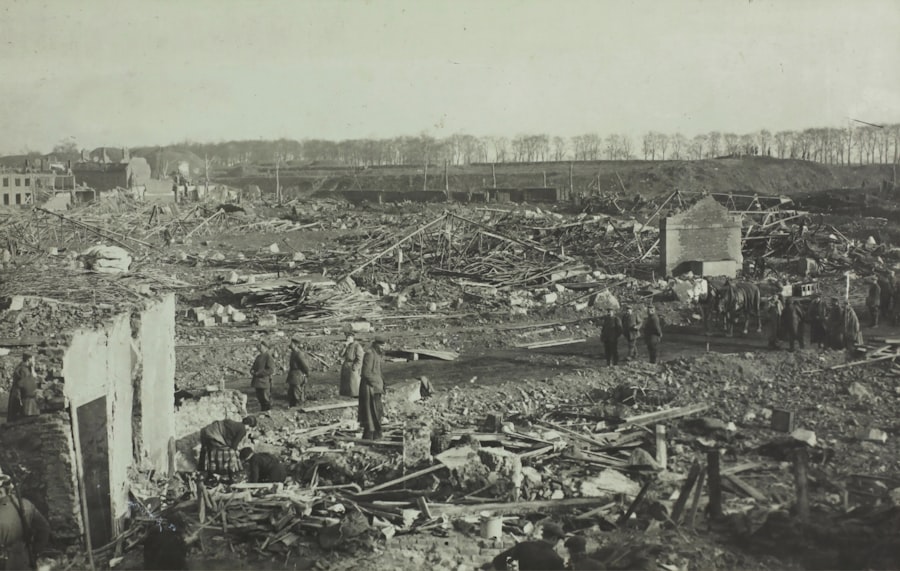Ukraine, a nation steeped in a rich tapestry of history and culture, occupies a strategic position in Eastern Europe. Its political boundaries have been shaped by centuries of conflict, shifting allegiances, and the aspirations of its people. The current borders of Ukraine were established following the dissolution of the Soviet Union in 1991, marking a significant moment in the country’s quest for sovereignty and independence.
These boundaries not only delineate the geographical extent of the state but also encapsulate the diverse ethnic, linguistic, and cultural identities that exist within its confines. The political boundaries of Ukraine are not merely lines on a map; they represent the culmination of historical events, territorial disputes, and the aspirations of various groups. The complexity of these boundaries is further exacerbated by ongoing geopolitical tensions, particularly with Russia, which has sought to assert its influence over Ukraine through annexation and military intervention.
Understanding Ukraine’s political boundaries requires an examination of both the historical context that shaped them and the contemporary challenges that arise from their existence.
Summary
- Ukraine’s political boundaries are complex and have evolved over time, influenced by historical, geographical, and cultural factors.
- The administrative divisions of Ukraine are divided into provinces, each with its own unique characteristics and governance structure.
- Within the provinces, there are districts that further subdivide the territory and play a role in local governance and administration.
- The historical boundaries of Ukraine have had a significant impact on the modern political structure, shaping the country’s identity and political landscape.
- The debate over Ukraine’s political boundaries continues to be a contentious issue, with various stakeholders advocating for different approaches to governance and territorial organization.
Provinces of Ukraine: Administrative Divisions
Ukraine is divided into 24 provinces, known as oblasts, along with the autonomous republic of Crimea and two cities with special status: Kyiv and Sevastopol. Each province serves as an administrative unit, facilitating governance and local administration. The oblasts vary significantly in size, population, and economic activity, reflecting the diverse landscape of Ukraine.
For instance, Kyiv Oblast surrounds the capital city and is a hub of political and economic activity, while Lviv Oblast in the west is known for its cultural heritage and historical significance. The administrative divisions play a crucial role in the decentralisation of power within Ukraine. Each province has its own local government, which is responsible for various aspects of governance, including education, healthcare, and infrastructure development.
This decentralisation aims to empower local communities and ensure that governance is more responsive to the needs of citizens. However, disparities in resources and administrative capacity among provinces can lead to uneven development and tensions between central and local authorities.
Districts of Ukraine: Subdivisions within Provinces

Within each province, Ukraine is further divided into districts, known as raions. These districts serve as essential subdivisions that facilitate local governance and administration at a more granular level. Each raion is tasked with implementing policies set forth by provincial authorities while addressing local issues such as public services, economic development, and community welfare.
The number of districts varies from province to province; for example, Kyiv Oblast comprises 25 raions, while smaller provinces may have fewer. The establishment of raions allows for a more tailored approach to governance, enabling local leaders to address specific needs within their communities. However, the effectiveness of these districts can be hampered by bureaucratic inefficiencies and a lack of resources.
In some cases, the boundaries of raions do not align with the social or economic realities on the ground, leading to challenges in service delivery and community engagement. The interplay between provincial and district governance remains a critical aspect of Ukraine’s political landscape.
Historical Boundaries of Ukraine: Influence on Modern Political Structure
The historical boundaries of Ukraine have been shaped by a myriad of influences over centuries. From the Kievan Rus’ in the 9th century to the Polish-Lithuanian Commonwealth and later the Russian Empire, each era left an indelible mark on the territorial configuration of Ukraine. The 20th century was particularly tumultuous; following World War I, Ukraine briefly declared independence before being absorbed into the Soviet Union.
The borders established during this period have had lasting implications for contemporary Ukraine. The legacy of these historical boundaries is evident in the current political structure of Ukraine. Regions with distinct historical ties often exhibit differing political preferences and cultural identities.
For instance, western regions such as Lviv have a strong national identity and lean towards pro-European policies, while eastern regions like Donetsk have historically been more aligned with Russia. This division has contributed to ongoing tensions within the country, particularly in light of recent conflicts that have further complicated national unity.
Debate over the Political Boundaries of Ukraine
The political boundaries of Ukraine are not without contention. The annexation of Crimea by Russia in 2014 marked a significant turning point in the debate over territorial integrity and sovereignty. This event not only altered the geographical landscape but also ignited discussions about self-determination among various ethnic groups within Ukraine.
The situation in Crimea has led to calls for greater autonomy in certain regions, particularly in areas with substantial Russian-speaking populations. Moreover, the ongoing conflict in Eastern Ukraine has raised questions about the legitimacy of existing boundaries. Pro-Russian separatist movements in Donetsk and Luhansk have sought to redefine political boundaries based on ethnic and linguistic affiliations.
This has resulted in a complex interplay between national identity and regional aspirations, complicating efforts to establish a cohesive national policy that addresses the diverse needs of all citizens.
Impact of Political Boundaries on Ukrainian Society

The political boundaries of Ukraine have profound implications for its society. They influence not only governance but also social cohesion and national identity. The delineation of borders has often exacerbated divisions among different ethnic groups, leading to tensions that can manifest in various forms, from political dissent to social unrest.
For instance, the divide between Ukrainian-speaking western regions and Russian-speaking eastern areas has been a source of friction that complicates efforts to foster a unified national identity. Furthermore, these boundaries impact economic development and resource distribution across the country. Regions with abundant natural resources or strategic economic advantages often experience more significant investment and growth compared to less fortunate areas.
This disparity can lead to feelings of marginalisation among certain populations, fuelling discontent and undermining social stability. The challenge for Ukrainian society lies in bridging these divides while promoting inclusivity and equitable development across all regions.
Challenges and Opportunities within Ukraine’s Political Boundaries
Navigating the complexities of Ukraine’s political boundaries presents both challenges and opportunities for its citizens and leaders alike. One significant challenge is addressing the legacy of historical grievances that continue to shape perceptions and interactions among different groups within society. Efforts to promote reconciliation and understanding are essential for fostering a sense of unity amidst diversity.
On the other hand, there are opportunities for growth and development within these boundaries. The decentralisation reforms initiated in recent years aim to empower local governments and enhance citizen participation in decision-making processes. By fostering local governance structures that are responsive to community needs, Ukraine can harness the potential of its diverse regions while promoting social cohesion.
Moreover, Ukraine’s geopolitical position offers unique opportunities for international collaboration and integration into European structures. As the country seeks to align itself more closely with European norms and standards, it can leverage its rich cultural heritage and human capital to attract investment and foster innovation.
Navigating Ukraine’s Complex Political Landscape
Ukraine’s political landscape is characterised by its intricate boundaries that reflect a complex interplay of history, culture, and contemporary challenges. Understanding these boundaries requires an appreciation for the historical context that has shaped them as well as an awareness of the ongoing debates surrounding territorial integrity and national identity. As Ukraine continues to navigate its path towards stability and prosperity, addressing the challenges posed by its political boundaries will be crucial for fostering unity among its diverse population while seizing opportunities for growth on both domestic and international fronts.
FAQs
What are the political boundaries of Ukraine?
The political boundaries of Ukraine are divided into administrative units known as oblasts (provinces) and raions (districts).
How many provinces are there in Ukraine?
There are 24 provinces, or oblasts, in Ukraine.
How many districts are there in Ukraine?
There are 136 districts, or raions, in Ukraine.
What are historical boundaries in Ukraine?
Historical boundaries in Ukraine refer to the traditional regions and territories that have historical and cultural significance, but do not have administrative or political authority. These boundaries are often based on historical kingdoms, principalities, and cultural regions.


